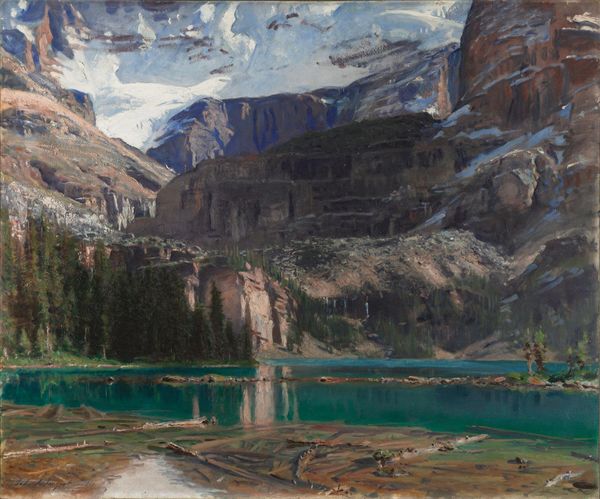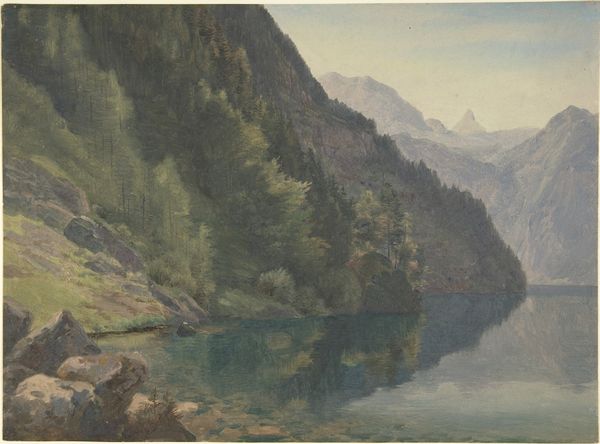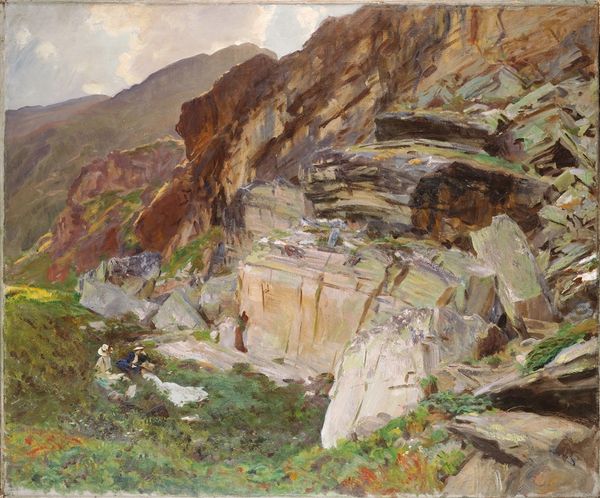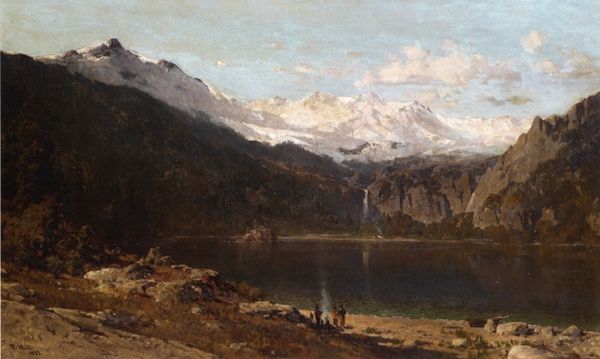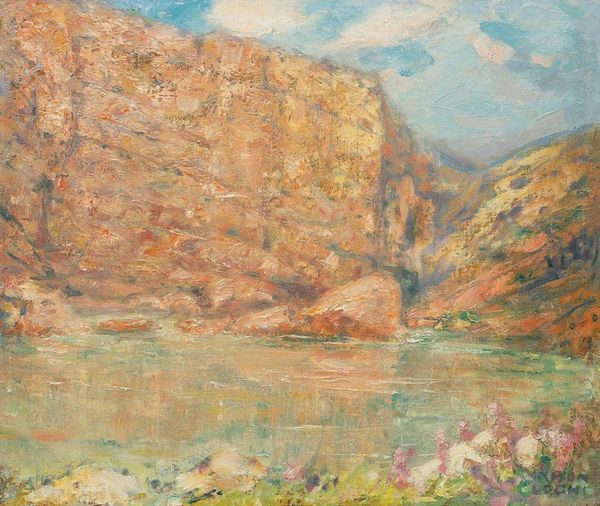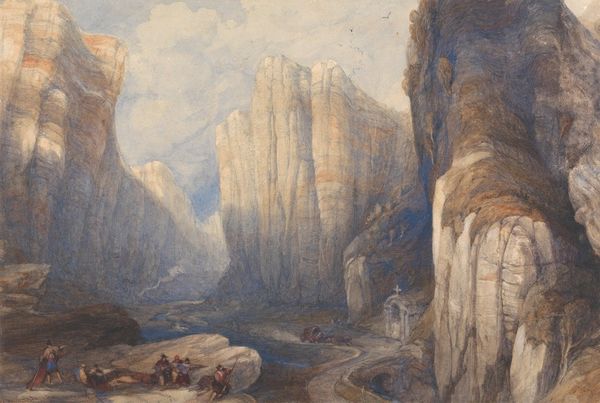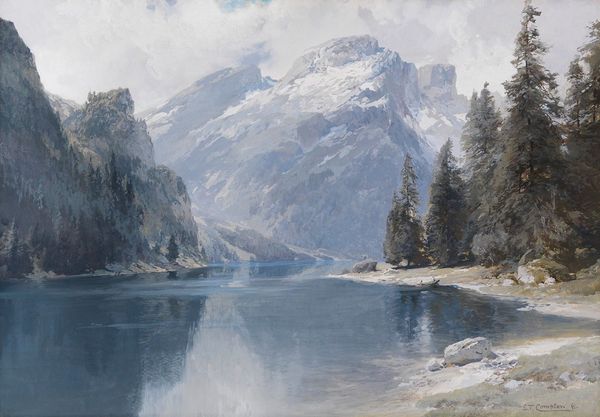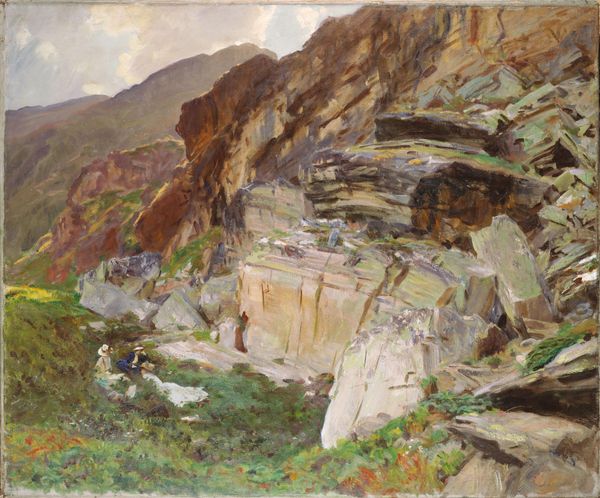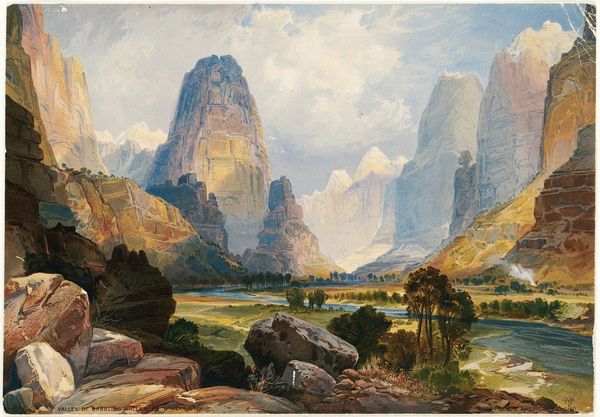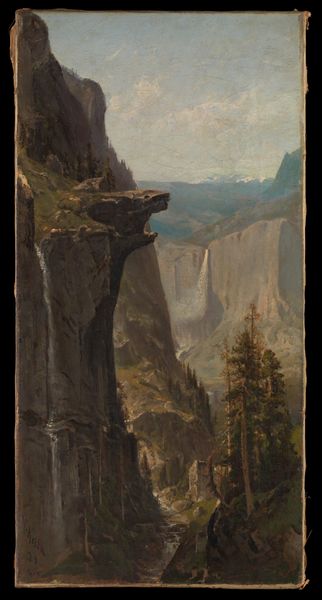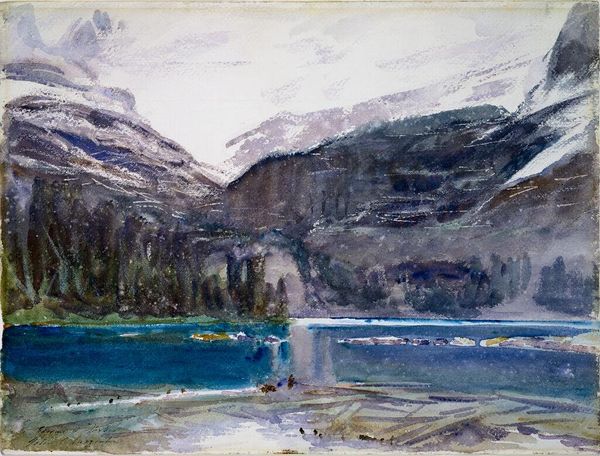
Copyright: Public Domain: Artvee
Editor: This is John Singer Sargent’s "Lake O’Hara," painted in 1916 using oil paint. It’s striking how he captures the grandeur of the landscape with such loose, expressive brushstrokes. The way he handles light on the mountains is especially captivating. What draws your eye in this piece? Curator: For me, it's less about the romantic idea of untouched wilderness and more about the cultural moment Sargent was operating in. This painting was created during the First World War. Do you see any reflections of this conflict? Editor: Hmm, not overtly. It feels very serene, almost escapist. Is that the connection you're making? Curator: Exactly. Think about the role of landscape painting at this time. For a European audience bombarded with images of destruction, idealized landscapes like this, especially from the "New World," offered a form of psychological retreat. Sargent, already celebrated as a portraitist of the elite, found a different kind of patronage in portraying the Canadian Rockies. It's about controlling and commercializing Nature. Editor: So, you're saying this idyllic scene served a very specific socio-political purpose? It's a curated, comforting vision during a time of upheaval? Curator: Precisely. The picturesque quality wasn’t just about aesthetics; it was about offering a counter-narrative. He highlights tourism. The building of railways made sites like this accessible. These artworks advertised leisure time. Editor: That's a fascinating way to contextualize it. I’m seeing it in a completely new light now, understanding its historical weight beyond its immediate beauty. Curator: Right? Art reflects society, not just what we see, but the why behind what we are seeing.
Comments
No comments
Be the first to comment and join the conversation on the ultimate creative platform.
